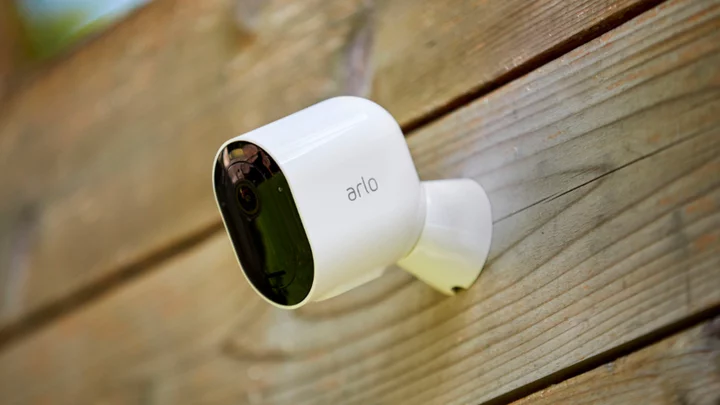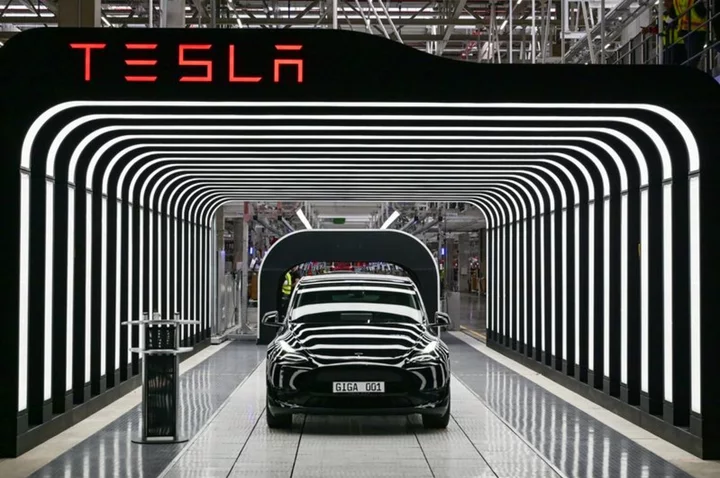Not sure if you've noticed, but real estate listings for fortresses with alligator-filled moats are in short supply nowadays. (Wild housing market, man.) Fortunately, recent advancements in home automation have prompted the development of a DIY alternative when it comes to anti-intruder and theft protection: the home security camera.
Most major tech companies now offer their own version(s) of the home monitoring device — Amazon and Google included — which has added another layer to an already crowded market populated by security giants like ADT, SimpliSafe, and Frontpoint. It's never been easier (or cheaper) to buy a home security camera, but at the same time, your choice has never been tougher: There are almost too many options to pick from.
So, how do you decide which home security camera is right for you? You read this guide, that's how.
What should I look for when buying a home security camera?
Here are some criteria to consider when weighing your options:
Connectivity: Each different type of security camera has its pros and cons. Wired ones can be tricky to set up (sometimes requiring professional installation) and have limited mobility due to their physical cables, but they typically have more reliable connections. On the flip side, wireless cameras are easier to install, but they're more vulnerable to hacking and signal drops. Wire-free cameras, meanwhile, are super flexible and portable and keep working during power outages, but you have to keep their batteries fresh. (We can say with a moderate degree of confidence that a dead camera isn’t incredibly useful.)
Location: A camera you're installing outside needs to be durable enough to withstand temperature changes and a variety of weather conditions. A good indoor camera, meanwhile, should look decent (or blend in) with the rest of your home decor.
Resolution: A security camera with blurry, low-quality video is a useless security camera — get one with at least 1080p (Full HD) video quality for crystal-clear footage.
Night vision: Make sure you can see who is paying you a visit no matter what time it is. Keep in mind that you'll usually pay a premium for color night vision (as opposed to infrared, which produces a black-and-white picture).
Field of view (FOV): You're going to be able to see more with a camera that's got a wider viewing angle, but it may result in what's called barrel (or fisheye) distortion. Alternatively, some security cameras can pan and tilt — including the eufy Solo IndoorCam P24, one of our top picks — which gets you a huge FOV with less of that curved, bulging effect.
Two-way audio: A security camera with a built-in microphone and speakers will let you hear and talk to whoever's visiting.
Recording type: Most of your options will capture recordings only when they detect motion within their FOV — these are also known as event-based recordings — though some security cameras also offer continuous or 24/7 recording. (That's less common because it eats up a ton of storage space.)
Notifications: You don't need to be sitting in a mission control room to stay up to date with the things your monitoring system sees; most security cameras' companion apps offer instant motion alerts and a live video feed at minimum.
Smart home integration: Got an Echo Show or Google Nest Hub hanging around? Get a security camera that works with smart assistants for hands-free voice control. ("Alexa, show me the backyard camera.") IFTTT or Apple HomeKit support is also a plus if you want to play around with automation between your camera and other smart home devices.
Storage: While a few home security cameras support microSD cards, the vast majority of them use cloud services for clip storage and remote access.
Add-on services: Need extra protection? Most security camera manufacturers offer optional monthly subscriptions for premium features like continuous recording, "activity zones" where important areas get extra attention, and AI-based object detection and facial recognition. (Cloud storage is often bundled in there, too.) You'll pay an additional monthly fee for those on top of the price of your camera, FYI.
Cost: Not counting any subscription plans, a nice security camera will cost you $50 to $200 depending on the features you're after. (If you find yourself gravitating toward options on the higher end of that spectrum, they'd better have built-in extras like sirens, alarms, floodlights, spotlights, and/or free storage.)
What's all this I'm hearing about Ring?
ICYMI, Amazon's super popular Ring security brand has a serious narc problem. The company's long-standing partnerships with thousands of U.S. police departments have effectively turned its video doorbells "into a nationwide, private surveillance system for cops rather than something customers can use for their own safety," writes Mashable tech reporter Alex Perry.
Ring announced a policy change in mid-2021 that forbid police from privacy requesting footage, yet Amazon admitted in July 2022 that it's still giving cops recordings without users' knowledge or consent in order to comply with "emergency" requests. Not great!
If you need any more reasons to avoid Ring (you shouldn't), here are several: The company once planned a neighborhood "watch list" based on facial recognition software and admitted that some of its own employees once tried to inappropriately access user videos. Most recently, it sneakily fixed a "high-severity" security vulnerability in its Android app (which is allegedly "packed with third-party trackers", according to the Electronic Frontier Foundation) without alerting users.
We could go on, but you get the idea: While we recommended Ring's security cameras in a previous iteration of this guide, we can no longer do so in good faith.
What's the best home security camera?
Keep scrolling to peep our top eight picks for keeping your home and stuff safe based on those aforementioned criteria.









